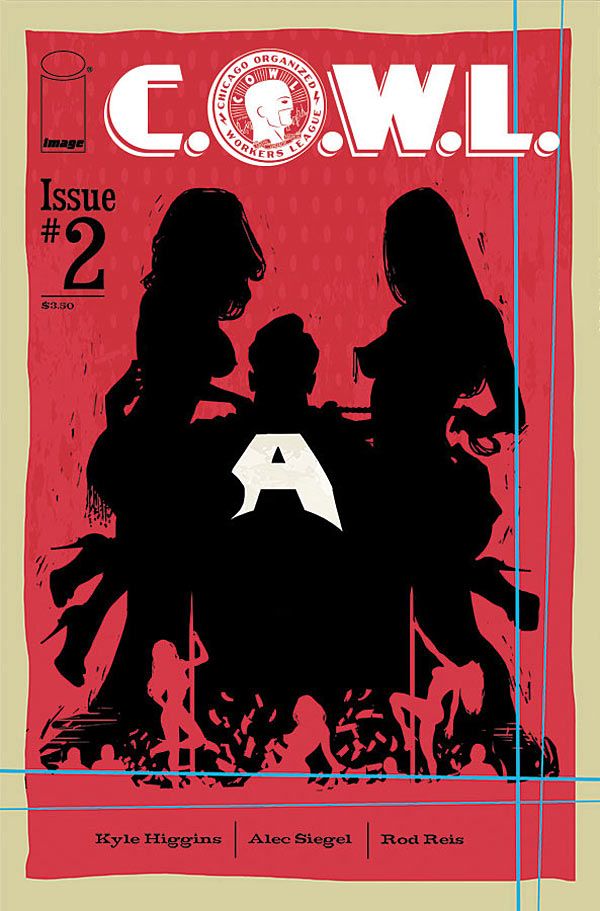Kyle Higgins, Alex Siegel and Rod Reis' "C.O.W.L" #2 is brimming with ideas and intrigues -- at times, one too many for the narrative to pick up momentum. Higgins and Siegel are constructing a series worthy of its title; this book really is about all of C.O.W.L, not just a few players. There are multiple storylines from multiple levels of the organization, and everything from past secrets to personal power dynamics is treated with import. That said, "C.O.W.L" #2 is one of those issues that makes reviewing serialized fiction so tricky. On a macro level, the groundwork that's being laid is complex and interesting, stakes-setting on both personal and organizational levels, and I'm genuinely excited for what's next. On an issue basis, though, "C.O.W.L" #2 is quite nice but not a knockout.
This issue focuses primarily on Grant and his partner Karl (Eclipse), though it also devotes time to John's investigation and Geoffrey Warner's political machinations. The switch in focus from City Hall superheroics to personal drama is part of what makes me both confused about C.O.W.L's focus and delighted by its complexity. Karl and Grant have a good rapport -- the cutaway to the map page is particularly well-timed -- so they make a solid emotional center for issue #2 even though superpowered cops are not my favorite part of "C.O.W.L"s premise.
As in the first issue, much of the worldbuilding relies on meaningful, vague detail drops. Complications from the past and schemes from the present are hinted at ominously, but a generally lean script and slow, tight panels from Reis keep the lines from landing like gimmicks. It's essential that these hints work, because with so many storylines to cover, ominous hinting provides most of the narrative forward motion in this issue. For instance, John doesn't get closer to answers for his investigation -- he doesn't even get any more clues -- but the reader does learn that his wife wants him to switch jobs and that Arclight enjoys superheroics for the perks.
Rod Reis establishes the setting and time period with a moody style that combines noir with monochrome. Scenes in Geoffrey Warner's office are almost entirely turquoise-gray, John's home is washed out in tan, and street scenes are blue-black. The effect drew my eye to the lines again and again. It's an interesting way to use washout to emphasize edges.
Overall, the art is improved from Issue #1. Even though "C.O.W.L" is about superheroes, Reis is zeroed in on the details rather than the dramatic -- no big splash pages for this series. His rough-and-tumble fight scene in this issue is a sequence of small panels, each focused on one moment from the fight. The struggle feels close and fierce as a result, all knuckles and knocked teeth. It shows that Reis understands his strengths as an artist.
"C.O.W.L" #2 ups the drama and the stakes from issue #1, but it still hasn't clarified the central concern of the series. Is this a union drama? A set of personal stories? A thriller? It looks complex and ambitious enough to evolve into all three and more.

